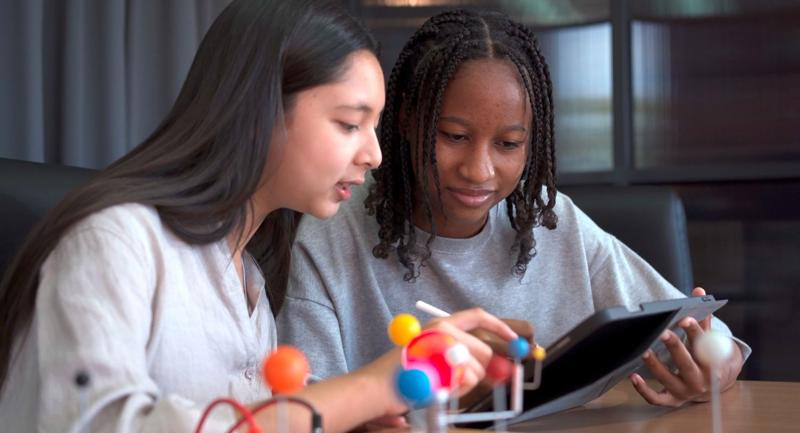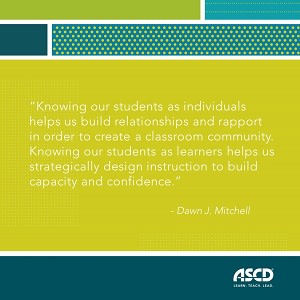Getting students excited about learning can sometimes feel like a monumental challenge. But it doesn’t have to be. In his recent ASCD webinar (available on-demand) author and professional learning consultant Mike Anderson acknowledged that the last year and a half have left some students searching for motivation—but, he explained, teachers have plenty of tools at their disposal to reenergize their classes.
To start, he outlined three major concepts that can help educators orient their efforts to get kids invested in their learning: 1) boosting intrinsic motivation, 2) reducing extrinsic motivation, and 3) cultivating self-management skills. These three ideas come from Anderson's new book, Tackling the Motivation Crisis: How to Activate Student Learning Without Behavior Charts, Pizza Parties, or Other Hard-to-Quit Incentive Systems.
Intrinsic motivation, he explained in the webinar, is the internal desire each student has to complete their work and participate actively in class. Educators shouldn’t try to teach intrinsic motivation to their students, but instead cultivate it naturally.
“There’s a difference there between thinking that it’s our job to motivate kids and instead thinking it’s our job to help create conditions where motivation can flourish,” Anderson said.
Drawing upon concepts he also discussed in the December/January issue of Educational Leadership, Anderson outlined six essential components of intrinsic motivation:
Intrinsic Motivation
1. Autonomy
When students have a degree of power and control over their learning, they are often much more likely to engage actively. The simplest way to foster autonomy, Anderson said, is through student choice. Even simple choices, such as where kids sit or which materials they use to complete an assignment, offer big dividends.
2. Purpose
According to Anderson, students need to feel as if there is a bigger reason why they are completing certain assignments, but their logic might not always line up with a teacher’s rationale. Explaining to the class that an activity will help students prepare for concepts further on in their education might be less convincing than saying, for example, “We’re getting fluent in our math facts so that we can play a really fun game with them.”
3. Belonging
Belonging describes a feeling of connection with others and knowing that you’re needed by a group. Group work or discussions are helpful ways to keep kids in conversation together, Anderson explained.
4. Competence
When you already know a little about a topic, it’s easier to become invested in learning more. By being cognizant of how the difficulty of an assignment aligns with students’ abilities, teachers can help everyone focus without pushing anyone to the margins. As Anderson said, “The kids who are the most disconnected are either the ones who are bored or they are so overly frustrated [with a challenging topic] that they are hitting their stress response.”
5. Curiosity
As teachers are well aware, tapping into students’ interests can keep them excited about learning new concepts. Teachers can also help young learners find more things that fascinate them, said Anderson, by allowing students to practice skills, like reading and writing, on topics they’re curious about.
6. Fun
Fun is an excellent way to keep kids invested in classwork, but opportunities for fun should be infused into the learning itself. Allowing students to write plays and skits, or work on projects they design, can be helpful examples of this.
“We’re going to make the learning fun. We’re not going to have a party to get you to the learning, the learning itself is going to be enjoyable,” Anderson said.
Extrinsic Motivation
In contrast with intrinsic motivation, extrinsic motivation relies on outside incentives and rewards to keep students engaged. Although there are moments when extrinsic motivators can be helpful, Anderson acknowledged, they can do long-term damage to student motivation.
In one example, he cited a study involving a group of preschoolers, all of whom loved to draw. The researchers told some children that if they drew during their free time, they would receive a reward. Other students were allowed to choose how they spent their free time and were rewarded spontaneously, without any clear connection to drawing. The results were surprising: The students who weren’t rewarded for their drawing actually did it more often than those who were.
“That intrinsic motivation had been crowded out by the extrinsic one. It’s kind of heartbreaking, really,” Anderson said.
To help educators differentiate between intrinsic and extrinsic systems, Anderson presented two lists of typical classroom activities.
Extrinsic vs. Intrinsic Motivators
One trouble with extrinsic motivators is that they’re quite common—both in school and at home, Anderson pointed out. To undo some of the engrained harm that these incentives cause, educators may need to spell out to students why extrinsic systems are not going to happen in their own classes. That isn’t to say that teachers can’t celebrate their students’ success, Anderson said, but any kind of celebration should be spontaneous and not linked to whether or not kids meet a certain threshold for learning.
Self-Management
Finally, Anderson stressed how essential self-management is to motivation. Even if students have the desire to learn and engage, many still need tools to better apply themselves. “You might be super motivated to run a 10k road race, but if you can’t make yourself lace up your sneakers and get out and start running, all the motivation in the world isn’t going to do you any good,” he said.
Self-management strategies are teachable, Anderson emphasized, and include skills like managing frustration, knowing when to ask for help, and prioritizing exercises and problems that you know how to handle first, before addressing the ones that are unfamiliar.
Ultimately, roadblocks in learning are inevitable and not every class is going to be bursting with student drive and engagement. But getting students motivated shouldn’t have to feel like a constant negotiation. As Anderson explained, with the right planning and understanding of what keeps kids interested, teachers can foster an environment that is enthralling. And at times when the challenges we all face, in school and out, seem to loom large, those tools are more important than ever.








